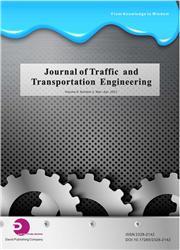Shunt-E 4.0—Autonomous Zero Emission Shunting Processes in Port and Hinterland Railway Operations
引用次数: 7
Abstract
: The port railway operation in Germany and Europe is not least due to its long history of technological and regulatory developments characterized by a high number of players and a lack of comprehensive planning and optimization of all relevant processes. Innovative technologies and business processes are therefore useful and needed to achieve key steps on the way to an overall optimization of rail transport within global supply chains. A substantial part of the European rail freight transport has its origin or its destination in an inland or sea port. Considering the railway system, ports play a more important role for urgently needed innovations than the pure interfaces between sea and land transport. Especially ports with their own railway system have an own responsibility in this matter. Insofar the goal of the Bremen Port Railway—which already now has a leading share of railway in modal split in Europe—is to exploit the opportunities offered by digitalization. Significant steps for this are the optimization and gradually automatization of rail operational processes on the last mile including modern and transparent IT systems and the designing of autonomous shunting processes. Together with research partners ISL (Institute of Shipping Economics and Logistics Bremen), BIBA (Bremen Institute for Production and Logistics) and IVE (Institute for Transport, Railway Construction and Operation in Brunswick) and in connection with associated business partners the project Rang-E has been applied for at the Ministry of Transport in the funding initiative IHATEC (Innovated HArbour TEChnologies)—and had won a grant to perform the proposed work. Basic thoughts are outlined in the following.shunt - e4.0——港口和腹地铁路运营中的自动零排放调车流程
德国和欧洲的港口铁路运营主要是由于其悠久的技术和监管发展历史,其特点是参与者众多,缺乏对所有相关流程的全面规划和优化。因此,创新技术和业务流程是有用的,也是实现全球供应链中铁路运输整体优化的关键步骤所必需的。欧洲铁路货运的相当一部分以内陆或海港为起点或目的地。考虑到铁路系统,港口在迫切需要的创新中扮演着比纯粹的海运和陆运接口更重要的角色。特别是拥有自己的铁路系统的港口在这件事上有自己的责任。到目前为止,不来梅港口铁路的目标是利用数字化提供的机会,该铁路目前已经在欧洲的铁路模式分割中占据领先地位。实现这一目标的重要步骤是最后一英里铁路运营流程的优化和逐步自动化,包括现代透明的IT系统和自主调车流程的设计。与研究合作伙伴ISL(不来梅航运经济和物流研究所)、BIBA(不来梅生产和物流研究所)和IVE(不伦瑞克运输、铁路建设和运营研究所)以及相关业务合作伙伴一起,range项目已在交通部的资助倡议IHATEC(创新港口技术)中申请,并获得了一笔赠款来执行拟议的工作。基本思想概述如下。
本文章由计算机程序翻译,如有差异,请以英文原文为准。
求助全文
约1分钟内获得全文
求助全文

 求助内容:
求助内容: 应助结果提醒方式:
应助结果提醒方式:


